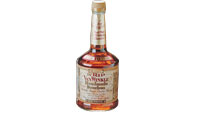
1. People feel very strongly about Rudy Giuliani, for good and for ill, as they did about Chris Smith’s story “Rudy Has Seen the Enemy and He Is … Us” (December 10). Reading the Comments section on nymag.com could cause a stiff neck, as the posts volley sharply back and forth between the Rudy lovers (who tend to view Smith as a “liar” and his article as “a typical liberal piece of crap”) and the Rudy haters (who applauded Smith and added observations such as “the greatest threat to America today is not a man living in a cave … [it is] Rudy Giuliani.” A reader named E. Lampke wrote in to complain that Smith “repeatedly referred to New Yorkers as ‘us’ and ‘we.’ When did ‘we’ New Yorkers elect Chris Smith to represent us?” Then there was the reader who loathes the former mayor so much that he posted three times on nymag.com, accusing Smith of being part of the media conspiracy to conceal Giuliani’s crimes. Slate thought the story was plenty hard enough, citing it as the Best Takedown of the week. And ESPN’s “Sports Guy,” attempting a Rudy-neutral position, said the story was “well-done whether you agreed with his slant or not.”

2. Philip Weiss’s story “The Fantasist” (December 17), about Jeffrey Epstein and his underage-girl problems, set off two parallel lines of debate—the first, over the issue of whether Epstein did anything wrong at all. “This article is so biased,” wrote one commenter. “It really reflects the puritanical heritage of Americans. The girls went into this eyes wide open. They got what they wanted, he got what he wanted. If you have ever seen the stripper clubs in Florida (and there are many), none of this is surprising.” A counter came quickly: “The girls were underage … that is against the law. Period. This perv Epstein broke the law and needs to pay for that. There are no excuses.” Concurrently, there were competing views on what all this says about the rich: “Fitzgerald was right. The rich are different. They are bottomless pits of needs.” “What does this have to do with ‘the rich’? More class hatred. This type of hatred is hurting us all.” “You know what God thinks of money when you see who he gives it to.” Finally, John Johnson of Ridgefield, Connecticut, blamed neither Epstein nor the culture of the rich but the magazine: “The Weiss article might have been titillating in the seventies, when the media was just starting to be deliberately salacious to push the journalistic envelope, but we have long since been thoroughly debased by the adolescent-pee-pee-tabloid genre, and it’s real tired (and so are we).”

3. The Comments feature on nymag.com occasionally gets a little impolite. But petulance can serve a purpose—when it inspires others to voice their views, as happened recently when a reader, identifying himself as Underpants, lit into David Edelstein’s review of Todd Haynes’s Bob Dylan movie I’m Not There. Wrote Underpants: “I now know not to put faith in a David Edelstein review. This movie was great. Don’t believe what he writes because he either 1) doesn’t know Dylan from Britney Spears or Dylan from Picasso or Dylan from Dylan’s myths or 2) the movie wasn’t linear enough and didn’t wrap up nicely in a bow.” Then came this, from another reader: “While I acknowledge that users named Underpants aren’t my preferred source of reliable movie criticism … I do want to point out that one tremendously valuable thing about David’s reviews is that whether I agree or disagree with him about a movie’s merits, his reviews are nearly always helpful for me to engage with that movie as a work of art. In other words, I don’t value this column for its ability to predict, with laser precision, whether I’ll like a given movie. That sounds pretty boring, doesn’t it, Underpants?”

4. Finally, our bourbon tasting, “Gift Finder: Bourbon at Its Best” (November 26), caused a minor ruckus in the whiskey community for our incorrect assertion that Michter’s ten-year, our top-ranked selection, is made at a distillery that “supplied rye to the Revolutionary army.” Turns out that hasn’t been true for more than a decade. That same story inspired reader Susan Ellis Sheridan to recommend affordable alternatives to the higher-priced hooch we featured: “The best value is Old Rip Van Winkle. Another good buy as a mixer is Evan Williams. Take the word of a Kentucky woman.” Cheers.
Correction: In “The Culturati Caucus” (December 17), Jacqueline Z. Davis should have been identified as the executive director for performing arts at the New York Public Library.
The Readers’ Top Ten
In this final issue of 2007, we offer the year’s most e-mailed stories from nymag.com.
1. How Even a Little More Sleep Makes Kids Smarter, by Po Bronson
2. The Power (and Peril) of Praising Your Kids, by Po Bronson
3. The Return of Superfly (from 2000), by Mark Jacobson
4. Alas, Poor Couric, by Joe Hagan
5. Bottom Line: Was Last Week’s Housing-Market Crash Worse Than You Think?, by James J. Cramer
6. The Science of Gaydar: New Research on Everything From Voice Pitch to Hair Whorl, by David France
7. Why New Yorkers Live Longer, by Clive Thompson
8. A Ranking of Seven Hotels for Under $200 in New York, by Stephen Milioti
9. Does Exercise Really Make Us Thinner?, by Gary Taubes
10. A Conversation Between Frank Lucas and Nicky Barnes, by Mark Jacobson